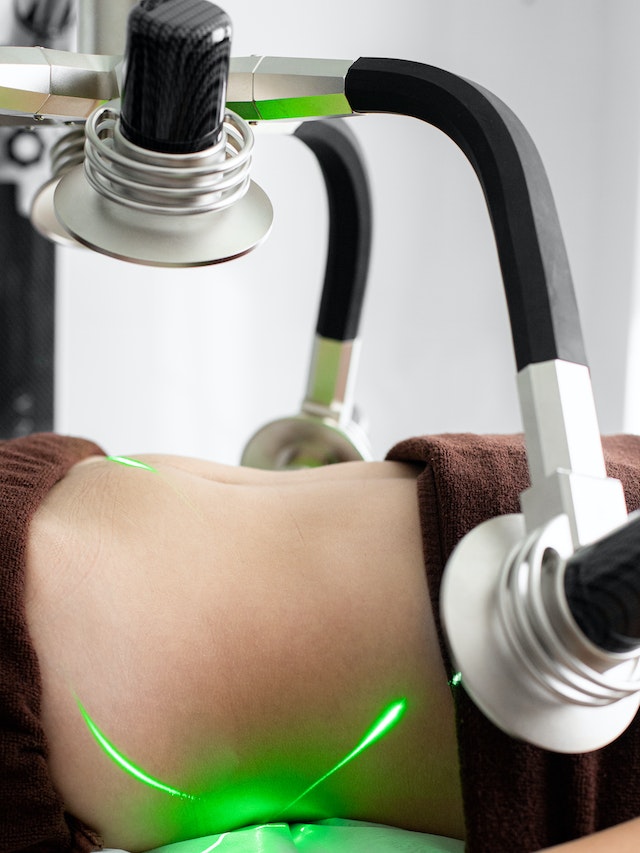Tummy tuck, also known as abdominoplasty, is a popular cosmetic surgical procedure that helps to remove excess skin and fat from the abdomen. This procedure is often sought by individuals who have lost a significant amount of weight or have undergone multiple pregnancies, leaving them with loose and sagging skin around the abdominal area. However, the cost of a tummy tuck can be a major concern for many individuals considering this procedure.
The cost of a tummy tuck can vary widely, depending on several factors, such as the surgeon’s experience, the type of procedure performed, the geographic location of the practice, and the extent of the surgery required. Typically, the cost of a tummy tuck can range from $3,000 to $12,000 or more. It is important to note that this cost does not include additional fees, such as anesthesia, operating room fees, and post-operative care.
Key Takeaways
- The cost of a tummy tuck can vary widely depending on several factors, such as the surgeon’s experience, the type of procedure performed, the geographic location of the practice, and the extent of the surgery required.
- It is important to consider additional fees, such as anesthesia, operating room fees, and post-operative care, when calculating the total cost of a tummy tuck.
- While some insurance plans may cover the cost of a tummy tuck in certain circumstances, it is important to check with your provider to determine your coverage.
Understanding Tummy Tuck
Tummy tuck, also known as abdominoplasty, is a surgical procedure that removes excess skin and fat from the abdominal area. It is often performed as part of body contouring to improve the appearance of the midsection.
There are two main types of tummy tuck: full tummy tuck and mini tummy tuck. A full tummy tuck involves making an incision across the lower abdomen, removing excess skin and fat, and tightening the abdominal muscles. A mini tummy tuck is a less invasive procedure that only addresses the lower part of the abdomen and does not involve muscle tightening.
The cost of a tummy tuck varies depending on several factors, including the type of tummy tuck, the surgeon’s experience, and the geographic location of the practice. According to the American Society of Plastic Surgeons, the average cost of a tummy tuck in the United States in 2023 is around $6,000 to $12,000.
It is important to note that tummy tuck is not a weight loss procedure and should not be used as a substitute for a healthy lifestyle. It is best suited for individuals who have excess skin and fat in the abdominal area that cannot be eliminated through diet and exercise alone.
Overall, tummy tuck can be an effective way to improve the appearance of the midsection and boost self-confidence. It is important to consult with a board-certified plastic surgeon to determine if you are a good candidate for the procedure and to discuss the potential risks and benefits.
The Procedure
A tummy tuck, also known as abdominoplasty, is a surgical procedure that removes excess skin and fat from the abdomen and tightens the abdominal muscles. The procedure is typically performed under general anesthesia and can take anywhere from one to five hours, depending on the extent of the surgery.
During the procedure, the surgeon will make an incision in the lower abdomen, usually from hip to hip, and remove excess skin and fatty tissue. The belly button may also be repositioned if necessary. In some cases, the surgeon may also repair the abdominal muscles, which can become stretched or separated due to pregnancy or weight gain.
Once the excess skin and fat have been removed and the muscles have been repaired, the surgeon will close the incision with sutures. A compression garment may be worn after the surgery to help reduce swelling and support the healing process.
It is important to note that a tummy tuck is not a weight loss procedure and should not be used as a substitute for a healthy diet and exercise. It is also important to have realistic expectations about the results of the surgery, as individual results may vary.
Overall, a tummy tuck can be an effective way to achieve a flatter, more toned abdomen for those who have excess skin and fat that cannot be eliminated through diet and exercise alone.
Role of a Plastic Surgeon
A plastic surgeon is a medical professional who specializes in the reconstruction, restoration, and alteration of the human body. They are trained to perform a variety of procedures, including tummy tucks, breast augmentation, facelifts, and more.
When considering a tummy tuck, it is important to choose a board-certified plastic surgeon with experience in performing this particular procedure. Board-certified plastic surgeons have gone through rigorous training and testing to ensure they have the necessary skills and knowledge to perform safe and effective surgeries.
During the consultation with a plastic surgeon, patients can expect to discuss their goals, medical history, and any concerns they may have. The plastic surgeon will evaluate the patient’s abdomen and determine if they are a good candidate for a tummy tuck. They will also discuss the potential risks and benefits of the procedure.
The consultation fee for a plastic surgeon can vary depending on their location and level of experience. However, it is important to remember that the cost of the consultation is a small investment in the overall success and safety of the procedure.
The American Society of Plastic Surgeons recommends that patients do their research and choose a board-certified plastic surgeon for any cosmetic surgery. This ensures that the surgeon has the necessary training and experience to perform the procedure safely and effectively.
In summary, the role of a plastic surgeon in a tummy tuck procedure is crucial. Patients should choose a board-certified plastic surgeon with experience in performing tummy tucks and take the time to discuss their goals and concerns during the consultation.
Tummy Tuck Cost Breakdown
The cost of a tummy tuck can vary widely depending on several factors. These factors include the surgeon’s fee, anesthesia, operating room facilities, and related expenses. In this section, we will break down the costs associated with a tummy tuck and provide a range of prices.
Surgeon’s Fee
The surgeon’s fee is typically the largest cost associated with a tummy tuck. This fee can range from $3,000 to $10,000 or more, depending on the surgeon’s experience and reputation. It is important to choose a board-certified plastic surgeon who has experience performing tummy tucks to ensure the best possible outcome.
Anesthesia
General anesthesia is typically used during a tummy tuck procedure. The cost of anesthesia can range from $500 to $1,500 or more, depending on the length of the procedure and the type of anesthesia used.
Operating Room Facilities
The cost of operating room facilities can vary widely depending on whether the procedure is performed in a hospital operating room or an outpatient surgery center. Hospital operating rooms are generally more expensive than outpatient surgery centers. The cost of operating room facilities can range from $500 to $2,000 or more.
Facility Fee
In addition to the cost of the operating room facilities, there may be a facility fee charged by the surgeon’s office or the outpatient surgery center. This fee can range from $500 to $2,000 or more.
Related Expenses
There are several related expenses associated with a tummy tuck. These expenses can include prescriptions for pain medication, a compression garment to wear after the procedure, and recovery supplies such as gauze and bandages. The cost of these expenses can range from $100 to $500 or more.
In conclusion, the cost of a tummy tuck can vary widely depending on several factors. The total cost can range from $5,000 to $20,000 or more. It is important to discuss all costs associated with the procedure with your surgeon before making a decision.
Factors Influencing Cost
The cost of a tummy tuck can vary depending on several factors. Here are some of the most important factors that can influence the cost of the procedure:
Geographic Location
The location of the provider can have a significant impact on the cost of a tummy tuck. Generally, providers in larger cities and more affluent areas tend to charge more for the procedure. For example, the average cost of a tummy tuck in New York City is higher than the average cost in a smaller city in the Midwest.
Provider Experience and Reputation
The experience and reputation of the provider can also affect the cost of a tummy tuck. Providers with more experience and a better reputation may charge more for their services. However, it is important to note that a higher price does not always guarantee better results.
Type of Procedure
The type of tummy tuck procedure can also impact the cost. A full tummy tuck, which involves tightening the muscles and removing excess skin, is typically more expensive than a mini tummy tuck, which only addresses the lower abdomen.
Additional Procedures
If additional procedures are performed in conjunction with a tummy tuck, such as liposuction or breast augmentation, the cost will be higher.
Facility Fees
Facility fees, which cover the cost of using the operating room and other equipment, can also contribute to the overall cost of a tummy tuck.
Overall, the cost of a tummy tuck can vary greatly depending on these and other factors. It is important to consult with a qualified provider to determine the most accurate cost estimate for your specific needs.
Insurance and Tummy Tuck
When it comes to tummy tucks, insurance coverage can be a bit of a gray area. In general, tummy tucks are considered a cosmetic procedure and are not covered by insurance. However, there are some situations where insurance may cover the cost of a tummy tuck.
One situation where insurance may cover a tummy tuck is if it is deemed medically necessary. For example, if a patient has excess skin and tissue after significant weight loss, a tummy tuck may be necessary to improve their quality of life. In these cases, insurance may cover the cost of the procedure.
Another situation where insurance may cover a tummy tuck is if it is part of a reconstructive surgery following a mastectomy. In these cases, insurance may cover the cost of the tummy tuck as part of the overall reconstructive surgery.
It is important to note that insurance coverage for tummy tucks varies by provider and plan. Patients should always check with their insurance provider to determine if a tummy tuck is covered under their plan.
If a tummy tuck is not covered by insurance, patients may be able to finance the procedure through a payment plan or loan. It is important to carefully consider the financial implications of a tummy tuck and to work with a reputable and experienced surgeon to ensure the best possible outcome.
Recovery Process and Considerations
After undergoing a tummy tuck, patients should expect a recovery period that can last several weeks. The first few days after surgery are typically the most uncomfortable, and patients may experience pain and swelling in the abdominal area. Pain medication is prescribed to help manage discomfort during this time.
To help manage drainage after surgery, patients may have drainage tubes inserted into the incision site. These tubes are typically removed within a few days to a week after surgery, depending on the amount of fluid being drained. Patients are also advised to wear compression garments to help reduce swelling and promote healing.
During the recovery process, patients should avoid strenuous physical activity and heavy lifting for at least six weeks. Light walking is encouraged to help promote circulation and prevent blood clots. Patients should also avoid smoking and drinking alcohol during the recovery period as these activities can interfere with the healing process.
It is important for patients to closely follow their surgeon’s postoperative instructions to ensure a smooth recovery. Patients should attend all follow-up appointments and report any unusual symptoms or concerns to their surgeon.
In summary, the recovery process after a tummy tuck can be uncomfortable, but it is manageable with proper pain management and follow-up care. Patients should be prepared to take time off work and avoid strenuous activity during the recovery period. By following their surgeon’s instructions, patients can help ensure a successful outcome and minimize the risk of complications.
Risks and Complications
As with any surgical procedure, a tummy tuck involves certain risks and potential complications. It is important for patients to be aware of these risks and to discuss them with their surgeon before undergoing the procedure.
One of the most common risks associated with a tummy tuck is infection. While steps are taken to prevent infection, it can still occur. Patients can reduce the risk of infection by following their surgeon’s post-operative care instructions carefully.
Another potential complication is scarring. While every effort is made to minimize scarring, some scarring is inevitable. Patients should discuss scarring with their surgeon and ask to see before-and-after photos of previous patients to get a sense of what their own scarring may look like.
Bleeding is another potential risk associated with a tummy tuck. While bleeding is rare, it can occur and may require additional surgery to correct.
Seroma, a buildup of fluid under the skin, can also occur after a tummy tuck. This can be treated by draining the fluid with a needle or by placing a drain in the affected area.
Overall, while there are risks associated with a tummy tuck, they are generally low. Patients can minimize their risk by choosing a qualified and experienced surgeon and following all post-operative care instructions carefully.
Tummy Tuck and Weight Loss
Tummy tuck, also known as abdominoplasty, is a surgical procedure that removes excess skin and fat from the abdominal area, resulting in a flatter and more toned appearance. While tummy tucks are often associated with weight loss, it is important to note that they are not a weight loss procedure.
In fact, tummy tucks are typically recommended for individuals who have already achieved their weight loss goals through diet and exercise, but are left with loose skin and stubborn pockets of fat that are resistant to traditional weight loss methods.
Liposuction may be performed in conjunction with a tummy tuck to further contour the abdominal area and remove excess fat. However, it is important to note that liposuction is not a substitute for weight loss and should not be used as a weight loss tool.
Loose skin is a common concern for individuals who have lost a significant amount of weight, and a tummy tuck can help address this issue. However, it is important to have realistic expectations about the results of the procedure. In some cases, a panniculectomy, which removes excess skin and fat from the lower abdomen, may be a more appropriate procedure.
It is important for individuals considering a tummy tuck to maintain a healthy lifestyle and continue to exercise regularly after the procedure to maintain their results. A tummy tuck is not a permanent solution for weight loss or body contouring, but it can provide significant improvements in appearance and self-confidence.
Tummy Tuck Post-Pregnancy
Pregnancy is a magical time for many women, but it can take a toll on the body. One common issue is the development of loose skin and excess fat around the abdomen. This is especially true for women who have undergone a c-section or have experienced significant weight gain during pregnancy. A tummy tuck, also known as abdominoplasty, can help restore a woman’s pre-pregnancy body.
During a tummy tuck procedure, a plastic surgeon removes excess skin and fat from the abdomen and tightens the underlying muscles. This results in a flatter, more toned appearance. The procedure can also help reduce the appearance of stretch marks, though it is important to note that it is not a guaranteed outcome.
It is recommended that women wait until they are finished having children before undergoing a tummy tuck. This is because future pregnancies can undo the results of the procedure. However, women who have had a c-section may be able to undergo a tummy tuck after waiting a sufficient amount of time for their incision to heal.
The cost of a tummy tuck can vary depending on a number of factors, including the extent of the procedure and the geographic location of the surgeon. On average, patients can expect to pay between $6,000 and $12,000 for a tummy tuck. It is important to note that insurance typically does not cover the cost of cosmetic procedures.
In conclusion, a tummy tuck can be an effective way for women to regain their pre-pregnancy body. It is important to wait until after having children to undergo the procedure and to carefully consider the cost and potential risks involved.
Additional Considerations
Before undergoing a tummy tuck, there are a few additional considerations that patients should keep in mind. These factors can impact the overall cost of the procedure, as well as the results and recovery process.
Smoking
Smoking can have a negative impact on the healing process after a tummy tuck. Patients who smoke may experience slower healing times, increased risk of infection, and more noticeable scarring. In addition, smoking can increase the risk of complications during surgery. As such, many plastic surgeons recommend that patients quit smoking several weeks before and after their tummy tuck procedure.
Pubic Hair and Bikini Line
During a tummy tuck, the surgeon will make an incision along the lower abdomen. Depending on the extent of the procedure, this incision may extend to the pubic hair or bikini line. Patients should discuss this with their surgeon beforehand to ensure that they are comfortable with the placement of the incision.
Inner Thigh
In some cases, a tummy tuck may also involve addressing excess skin and fat on the inner thighs. This can be done in conjunction with the tummy tuck procedure or as a separate surgery. Patients should discuss their options with their surgeon to determine the best course of action.
RealSelf
RealSelf is an online community where patients can share their experiences with various cosmetic procedures, including tummy tucks. Patients can use RealSelf to research plastic surgeons, read reviews, and ask questions. This can be a valuable resource for patients who are considering a tummy tuck.
Medical Conditions
Certain medical conditions can impact the safety and effectiveness of a tummy tuck. Patients should disclose any medical conditions or medications they are taking to their surgeon during their consultation. This can help the surgeon determine whether a tummy tuck is a safe and appropriate option for the patient.
Account
The cost of a tummy tuck can vary depending on a number of factors, including the surgeon’s experience, the extent of the procedure, and the location of the practice. Patients should discuss the cost of the procedure with their surgeon and ensure that they understand all associated fees, including anesthesia, facility, and follow-up appointments. Some practices may offer financing options to help make the procedure more affordable.
Frequently Asked Questions
What is the average cost of a tummy tuck in Florida?
The average cost of a tummy tuck in Florida ranges from $6,000 to $12,000. However, the cost may vary depending on various factors such as the surgeon’s experience, the extent of the surgery, and the location of the clinic.
Does insurance typically cover the cost of a tummy tuck?
No, insurance does not typically cover the cost of a tummy tuck because it is considered a cosmetic procedure. However, some insurance companies may cover the cost if the surgery is deemed medically necessary.
How much does a mini tummy tuck typically cost?
A mini tummy tuck typically costs between $3,000 and $6,000. This procedure is less extensive than a full tummy tuck and only addresses the lower abdomen.
What is the cost of a 360 tummy tuck?
A 360 tummy tuck, also known as an extended tummy tuck, typically costs between $8,000 and $15,000. This procedure addresses excess skin and fat in the entire abdominal area, including the sides and back.
Are there any current specials for tummy tucks near me?
It is best to check with local clinics and surgeons to see if they are offering any specials on tummy tucks. However, it is important to research and choose a reputable surgeon rather than solely basing the decision on cost.
How long does a tummy tuck typically last?
The results of a tummy tuck can last for many years if the patient maintains a healthy lifestyle. However, weight gain, pregnancy, and aging can affect the results over time.





